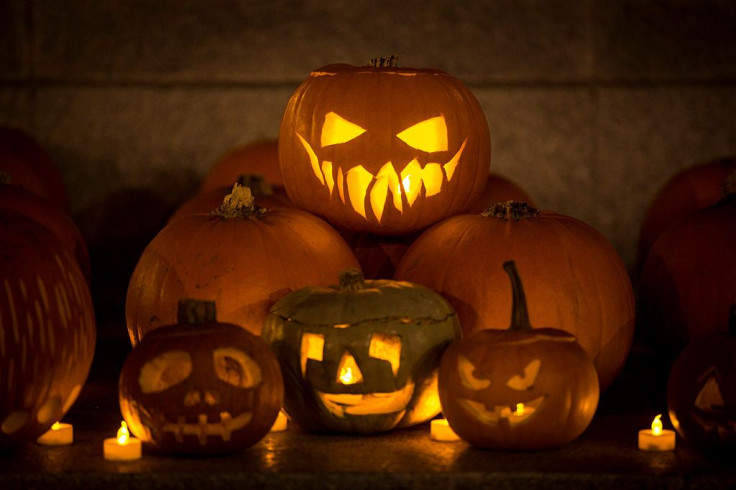What Does A Teal Halloween Pumpkin Mean? How To Decipher Different Colored Decorations
Although kids look forward to pigging out on an endless amount of candy on Halloween, it is up to adults to make sure they have a safe and memorable time on the spooky holiday.
Doing so means taking the proper steps to protect them through unique pumpkin decorations and Halloween accessories.
Here are some of the colors that may be seen on Halloween pumpkins while trick-or-treating and what they mean.
Teal Pumpkin
When a teal pumpkin is seen, parents should be aware that the inhabitants of the house will be skipping the candy and instead give out non-food treats like small toys or glow sticks.
The pumpkin signifies a household in support of the Teal Pumpkin Project. The goal is to raise awareness about food allergies and also contribute to creating a safer and more inclusive Halloween for all trick-or-treaters.
Purple Pumpkin
In Michigan, a purple pumpkin indicates households that are offering contactless treats amid the coronavirus pandemic.
Sean Barnhill of the Springfield-Greene County Health Department assured residents that they won’t have to skip Halloween despite the rising number of positive COVID-19 cases in the US, KY3 reports.
Instead, Barnhill suggested changing the way they typically greet trick-or-treaters.
“We are encouraging all neighborhoods to plan to offer contactless trick or treating,” he explained.
“So you paint it, let it dry overnight, put it on your porch or on your driveway to let trick or treaters know you are participating in contactless trick or treating,” Barnhill said.
However, a purple pumpkin can also represent a household in support of the Purple Pumpkin Project with the goal to raise awareness about epilepsy.
Blue Pumpkins
Some parents are hoping that using blue pumpkins and equipping their kids with a blue pumpkin bucket on Halloween will help bring awareness to children with autism.
In 2019, Tom Purser, the head of campaigns at the National Autistic Society, expressed the importance of being mindful that some trick or treaters have special needs.
“Halloween is an exciting time of year for many autistic children and adults. But it can be really difficult for autistic people who struggle with unexpected changes or who have sensitivities to noise, touch, and light,” he explained.
While trick-or-treaters with special needs will often be accompanied by someone who is familiar with their needs, Purser encouraged those who answer their doors to give out treats to be patient and understanding with a child that may appear distressed.

© Copyright IBTimes 2025. All rights reserved.






















